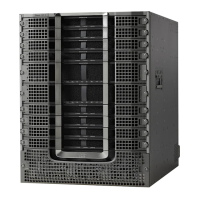During the course of a one-time interval when the CMTS is streaming records, if another time interval is
expected, the CMTS will ignore the new time interval and continue exporting the data until the previous
time interval ends.
Note
Event-based Session: In this method, the CMTS can export records at any time, when the session is open. In
other words, this method works on an open-ended session.
Ad-hoc Session: In this method, the CMTS creates a session, allows data streaming, and closes the session
when the data export is complete or when a closing command is generated.
A new session is created by issuing the ipdr session command. After, the CMTS receives the FLOW_START
message from the collector, the CMTS exporter sends a SESSION_START message to start exporting the
IPDR data from the collector. After all data is transported, the exporter receives a ACK message from the
collector, and then sends a SESSION_STOP message to the collector. This method is known as the Ad-hoc
session.
How to Configure IPDR Streaming Protocol
This section describes the configuration tasks that are performed when using the IPDR streaming protocol
feature on the Cisco CMTS platforms.
Use no ipdr command to remove the IPDR configuration.Note
Configuring the IPDR Session
To enable the CMTS application to add a session to the IPDR exporter, use the ipdr session command in
global configuration mode.
Use the no form of the command to remove the IPDR session.
Note
•
The session ID must be unique.
•
To remove an active session, you must deactivate it before removing it.
>
DETAILED STEPS
PurposeCommand or Action
Enables privileged EXEC mode.enable
Step 1
Example:
Router> enable
•
Enter your password if prompted.
Cisco cBR Series Converged Broadband Routers Troubleshooting and Network Management Configuration Guide
for Cisco IOS XE Fuji 16.8.x
111
IPDR Streaming Protocol
How to Configure IPDR Streaming Protocol

